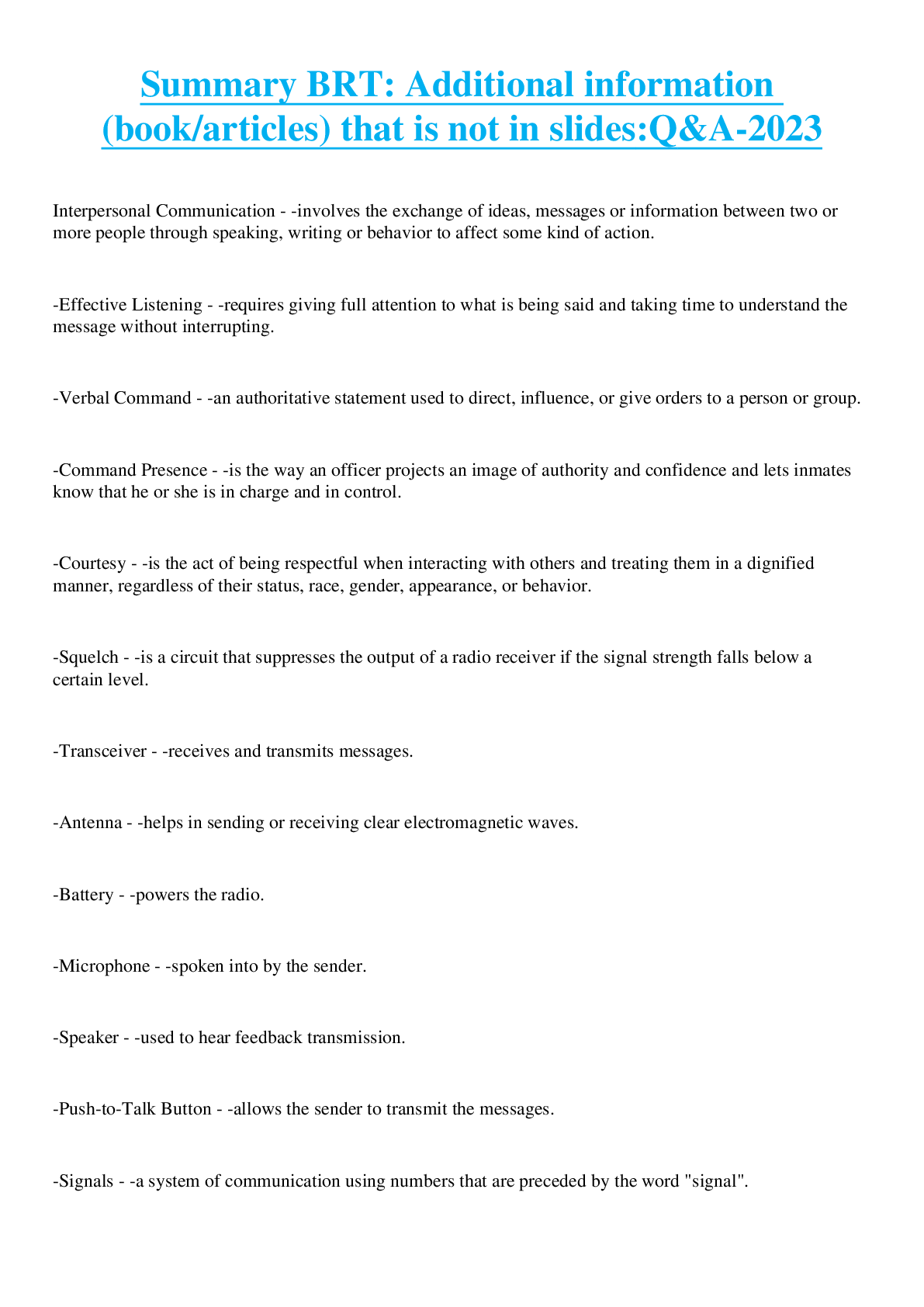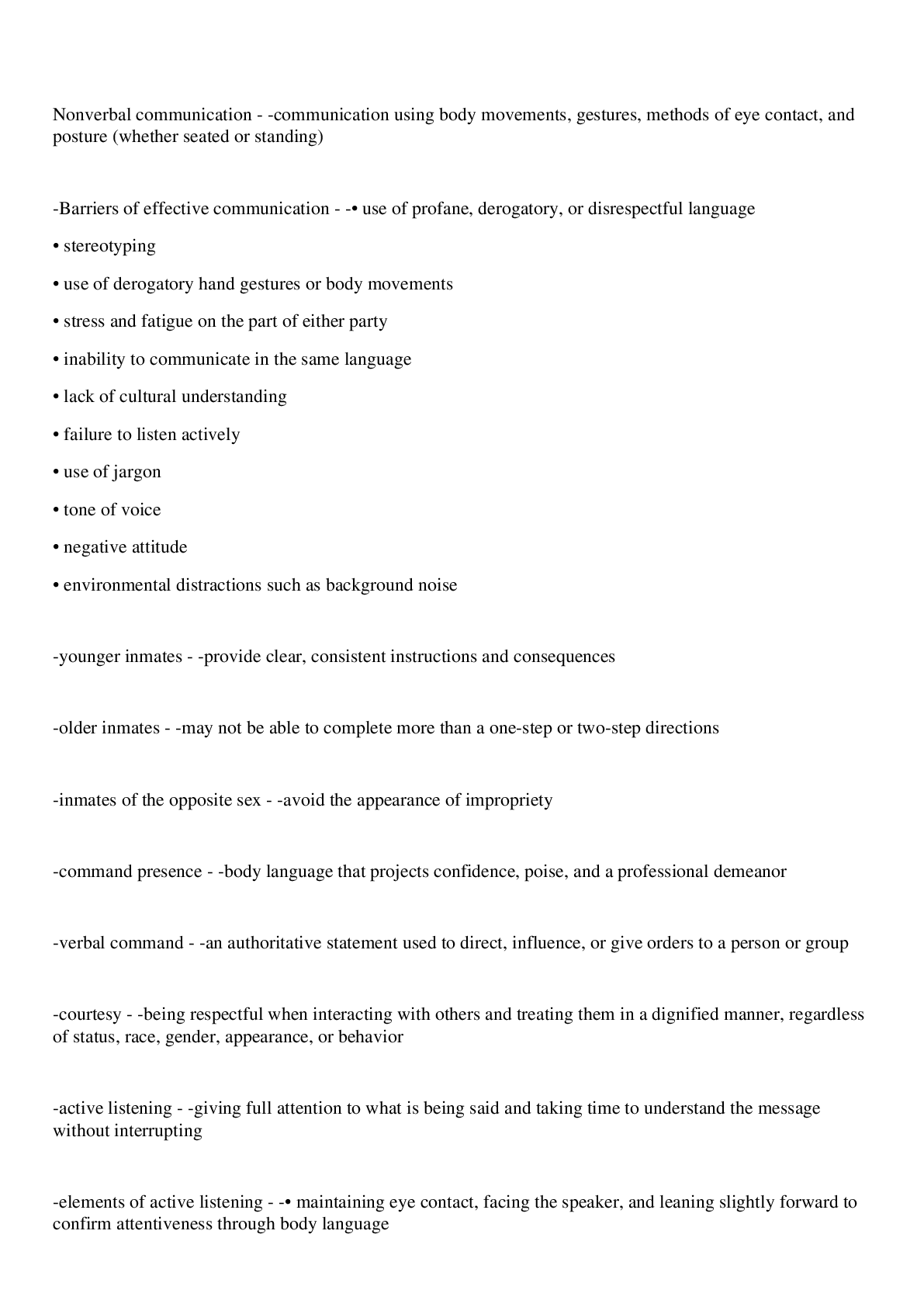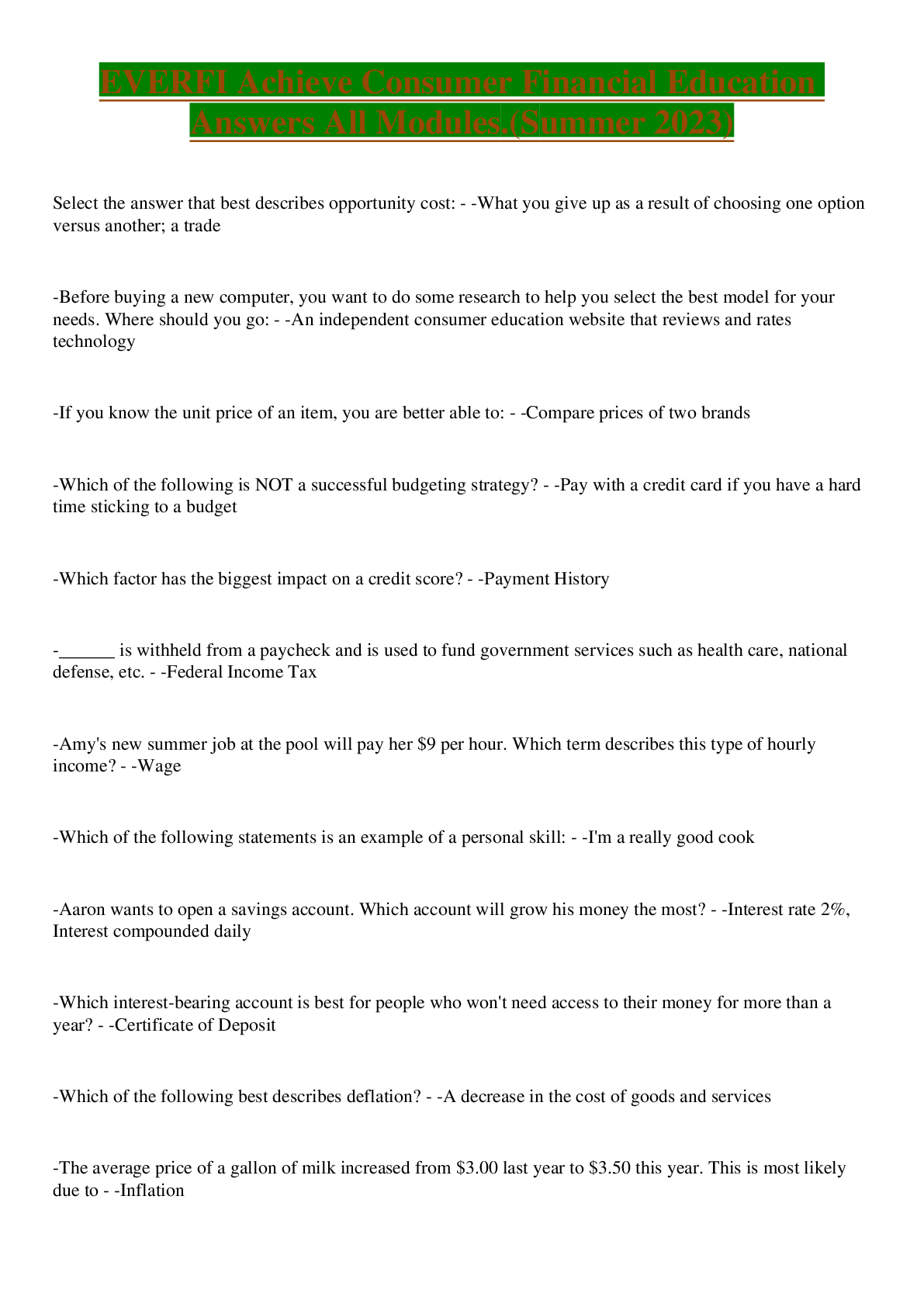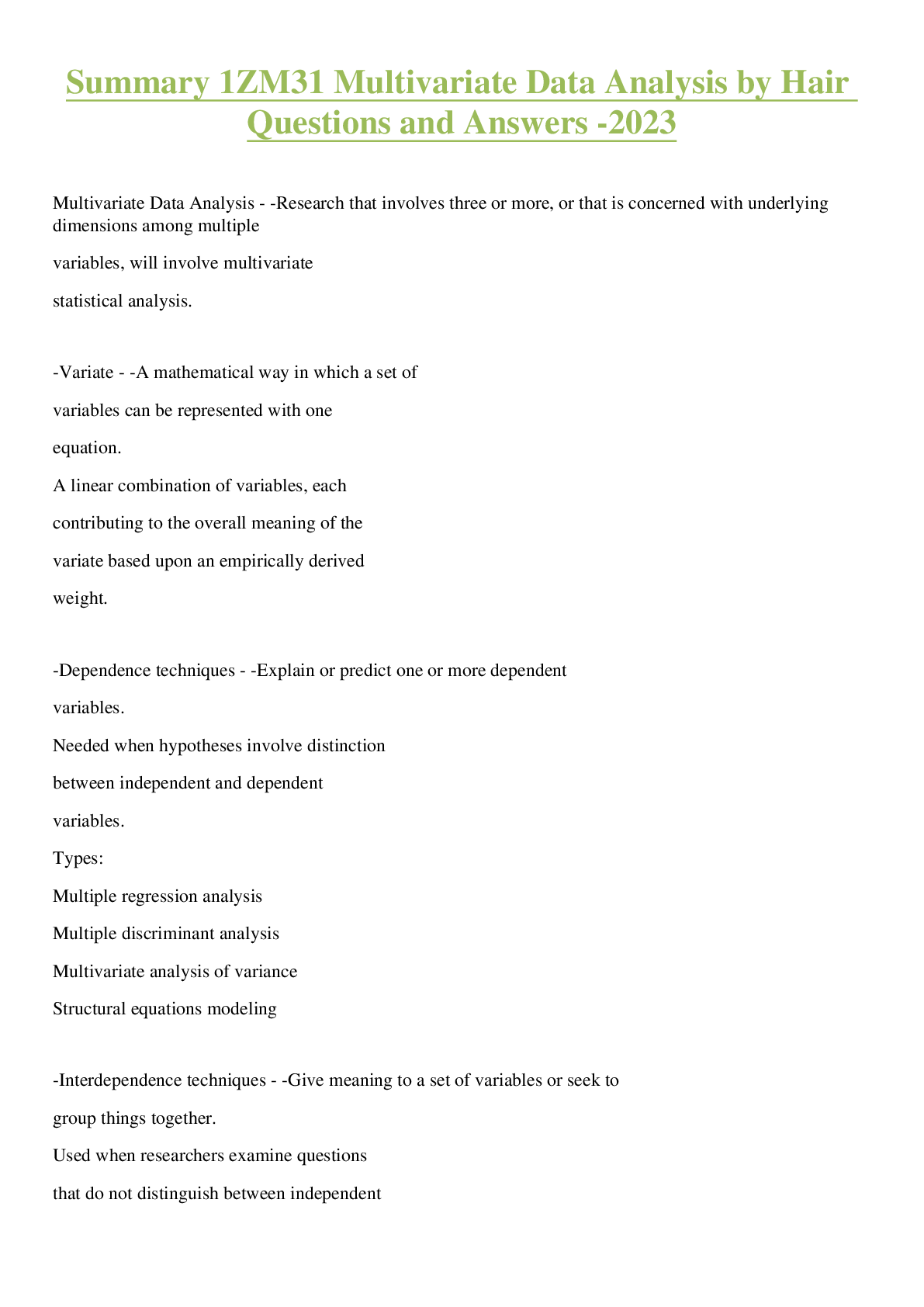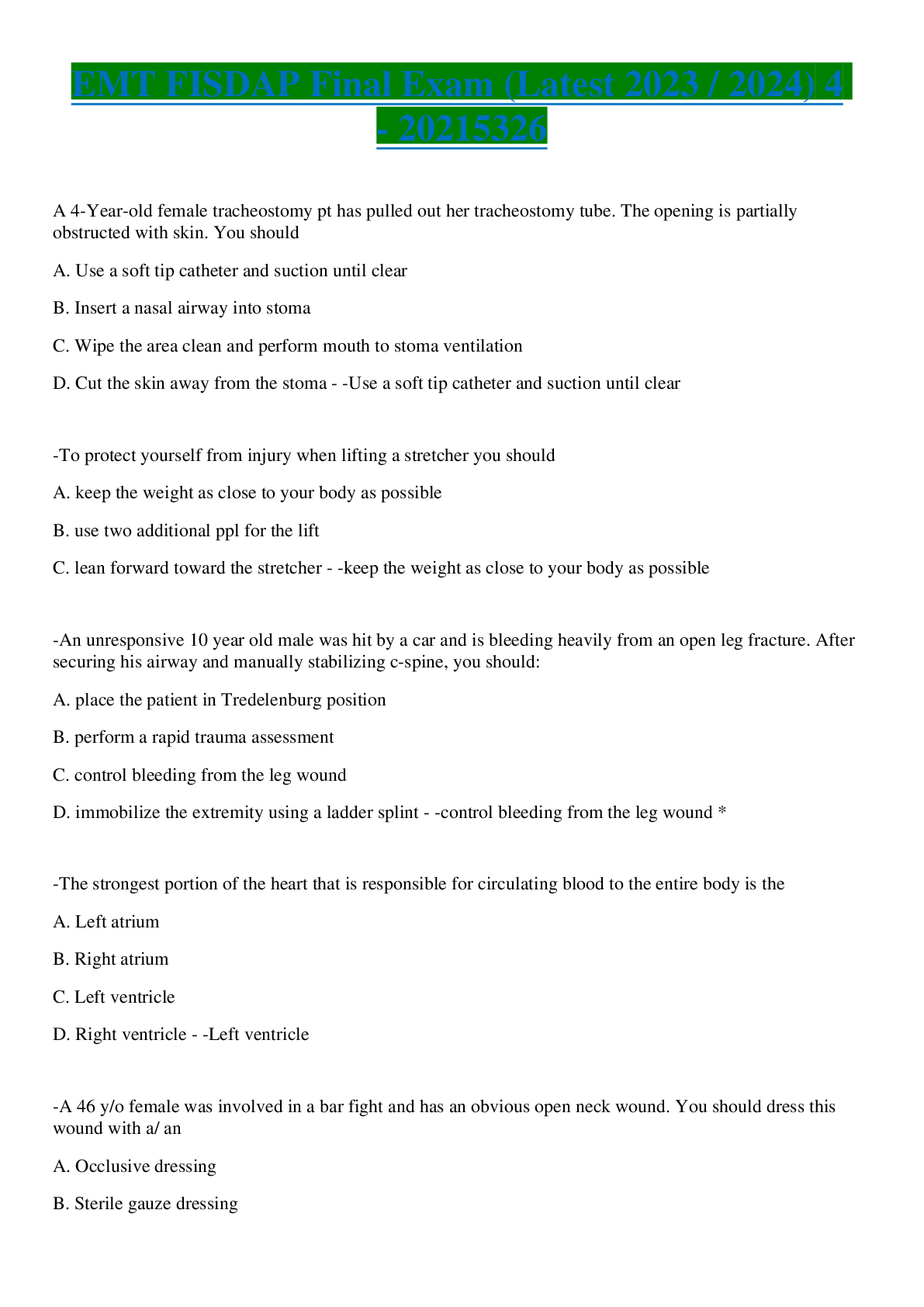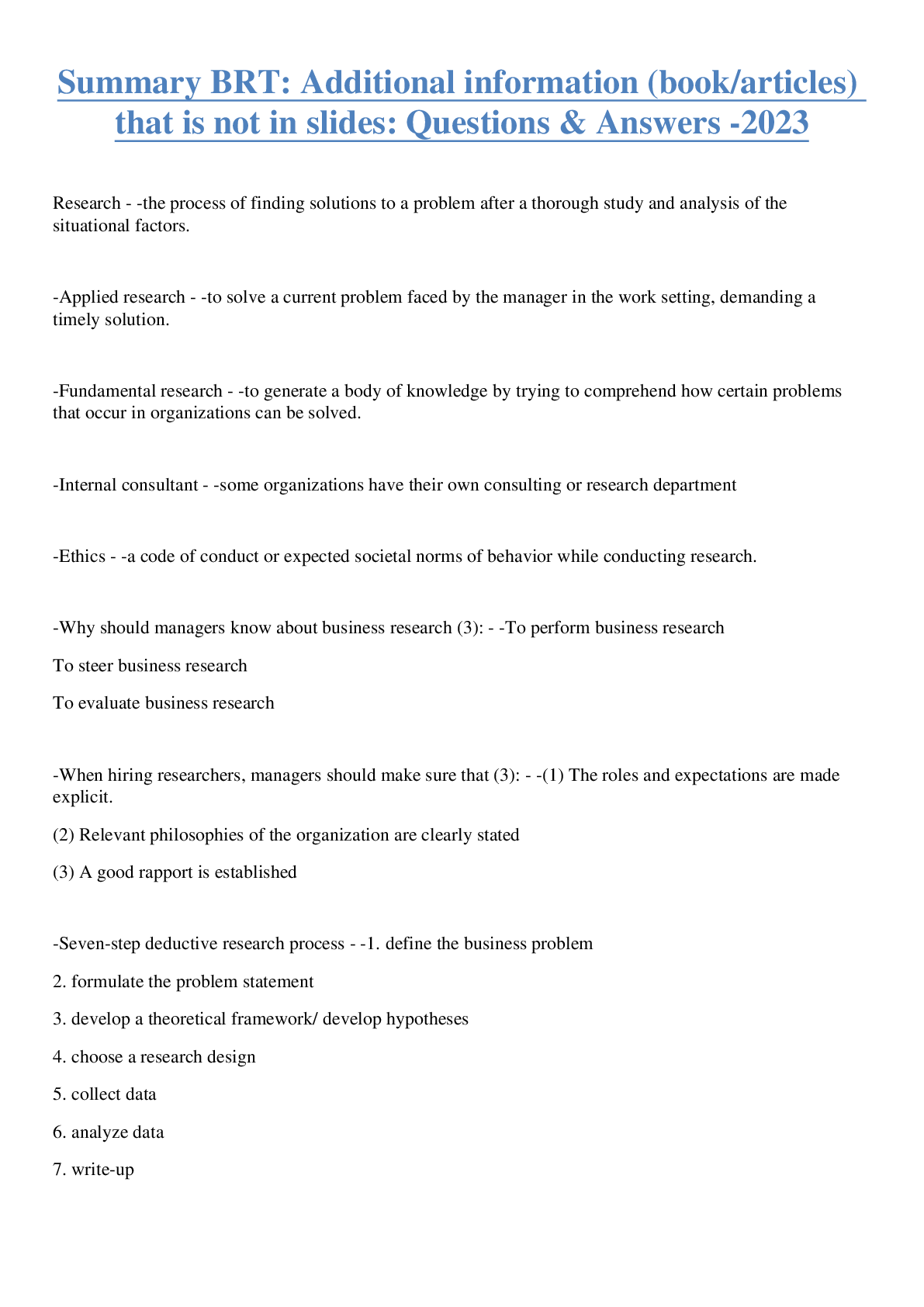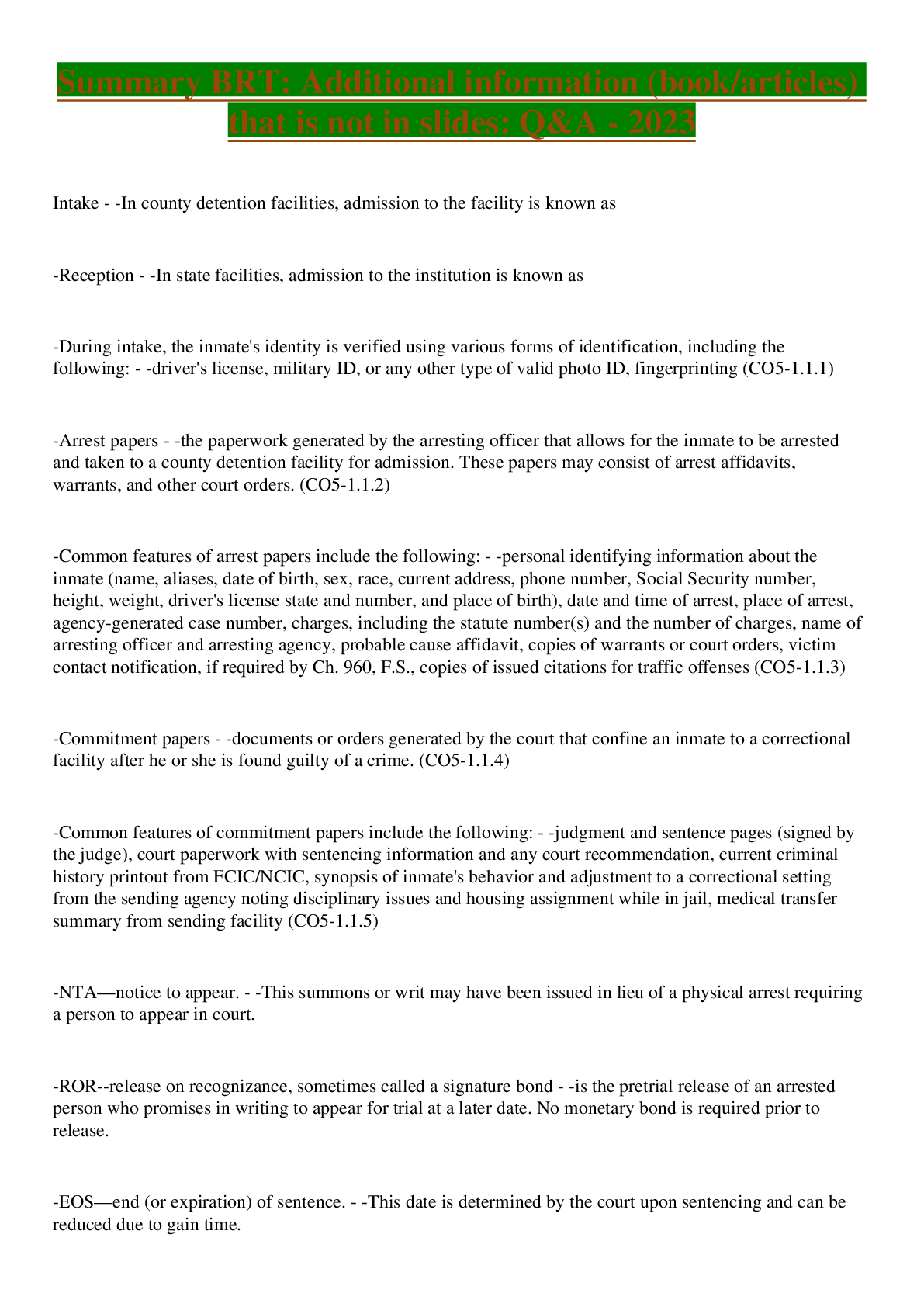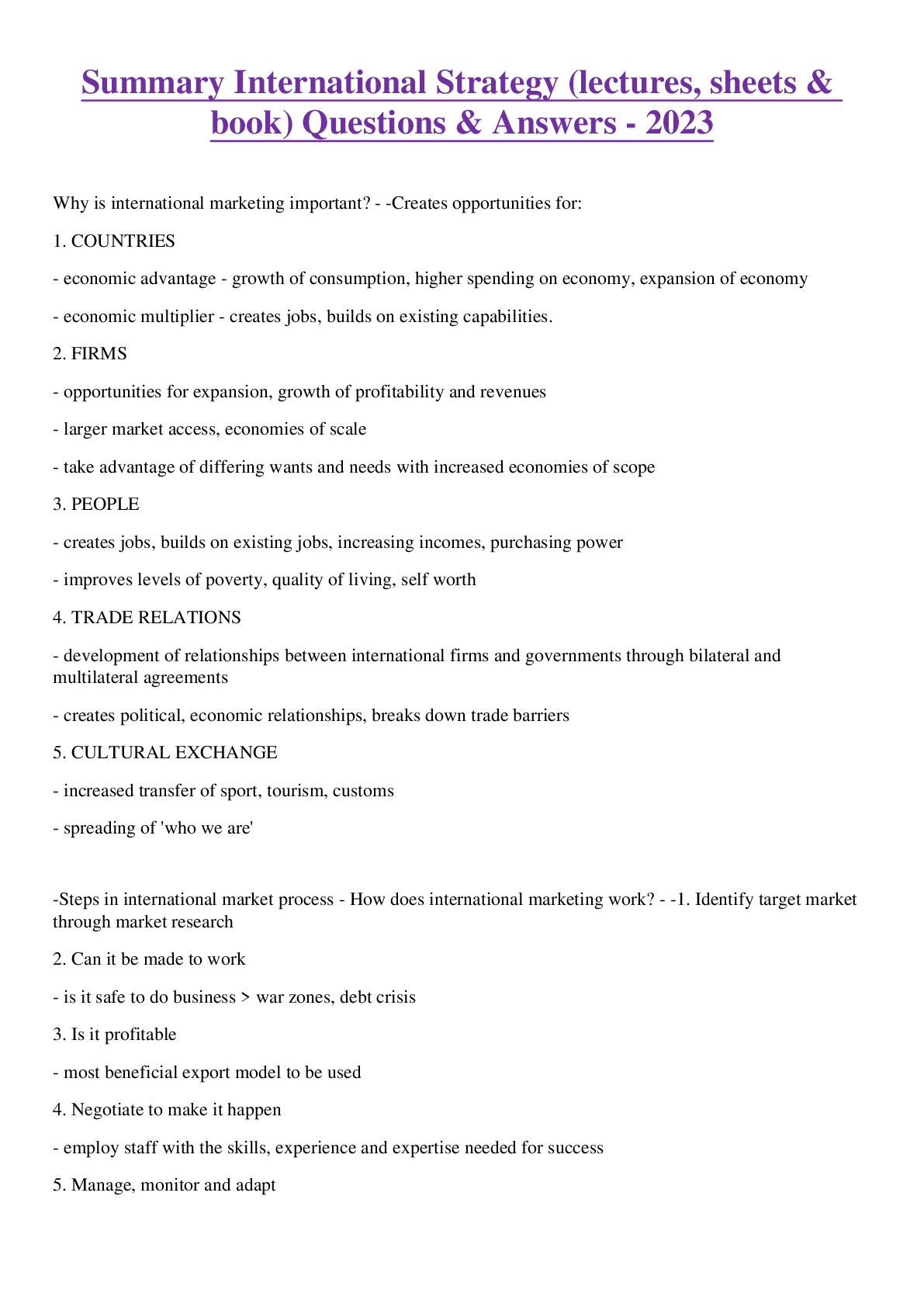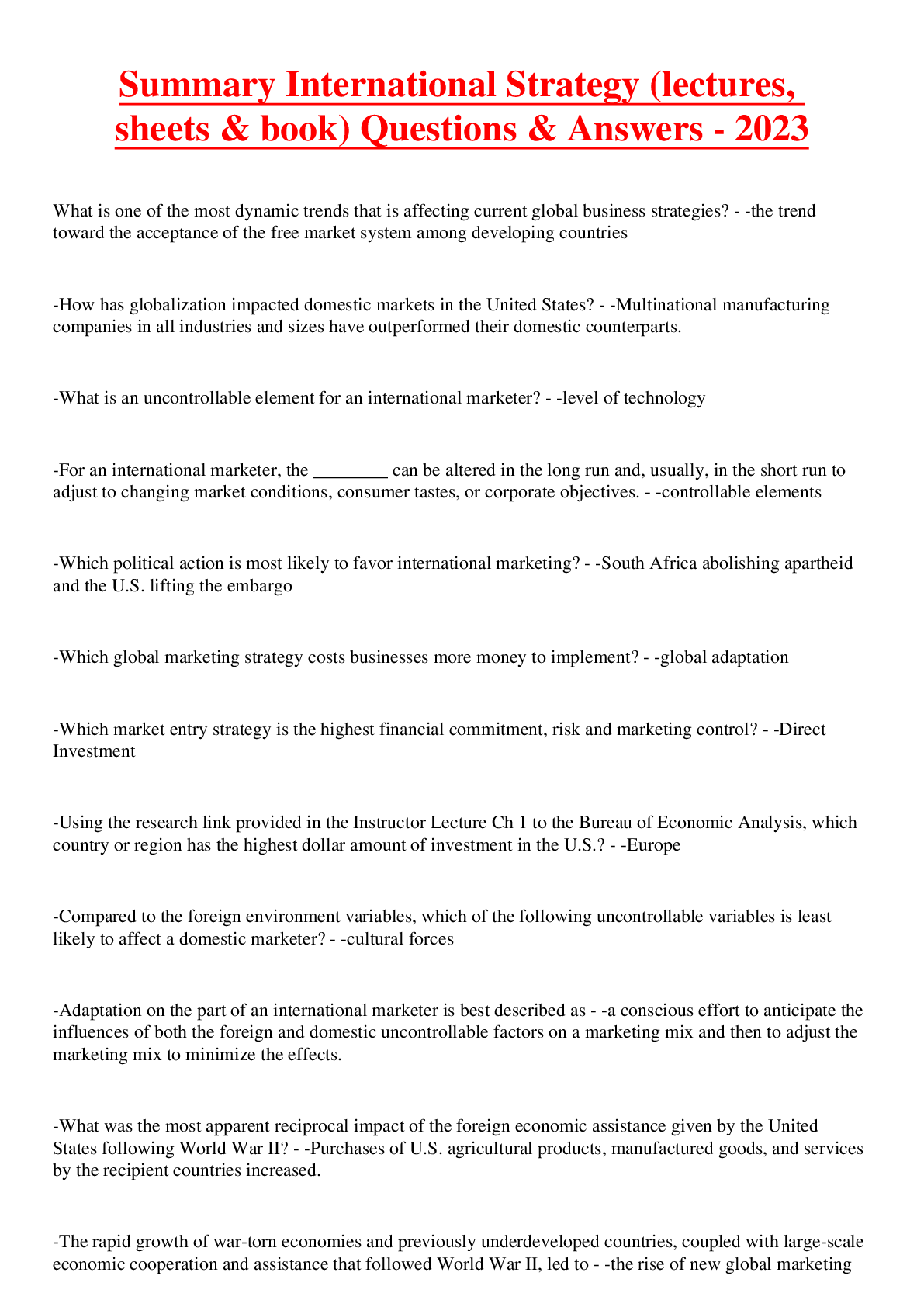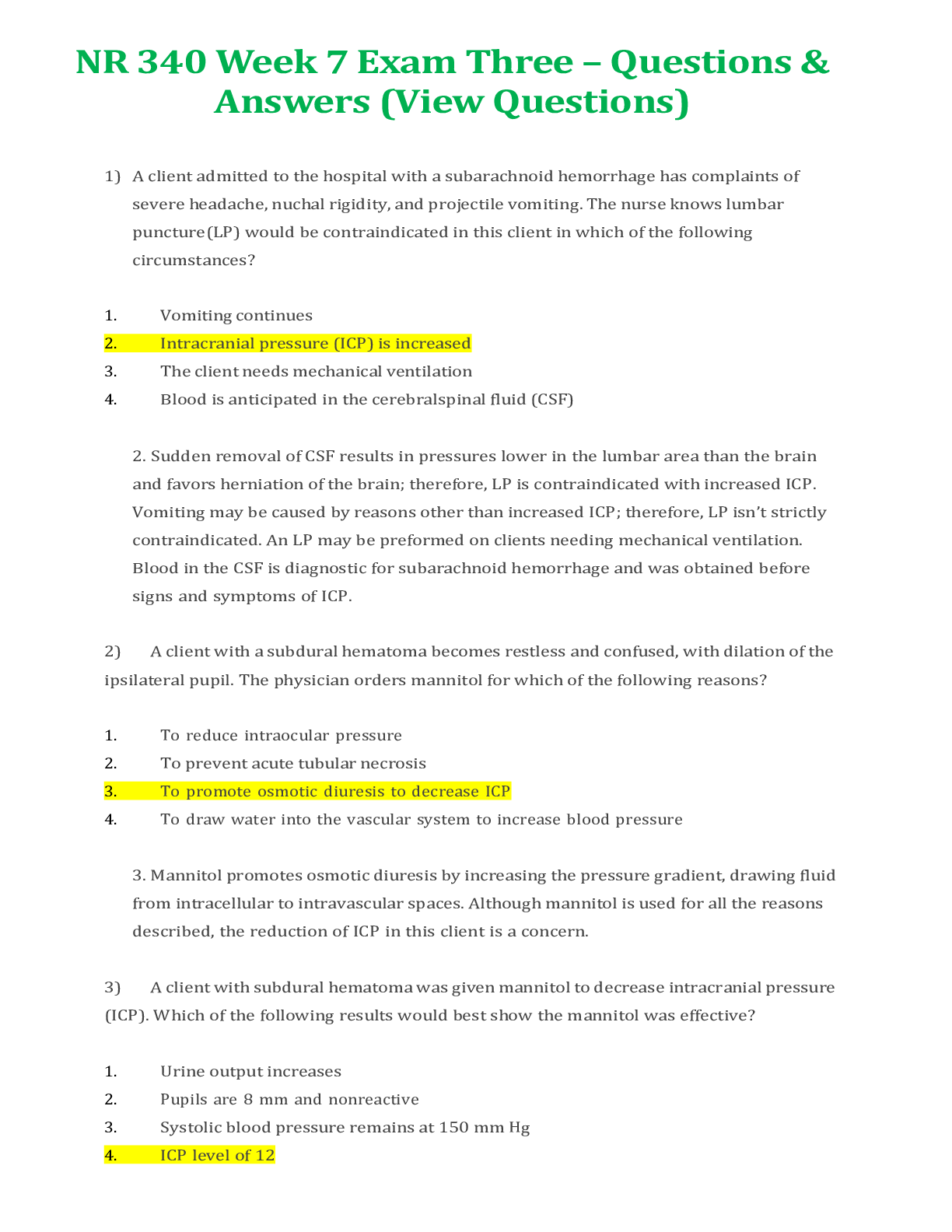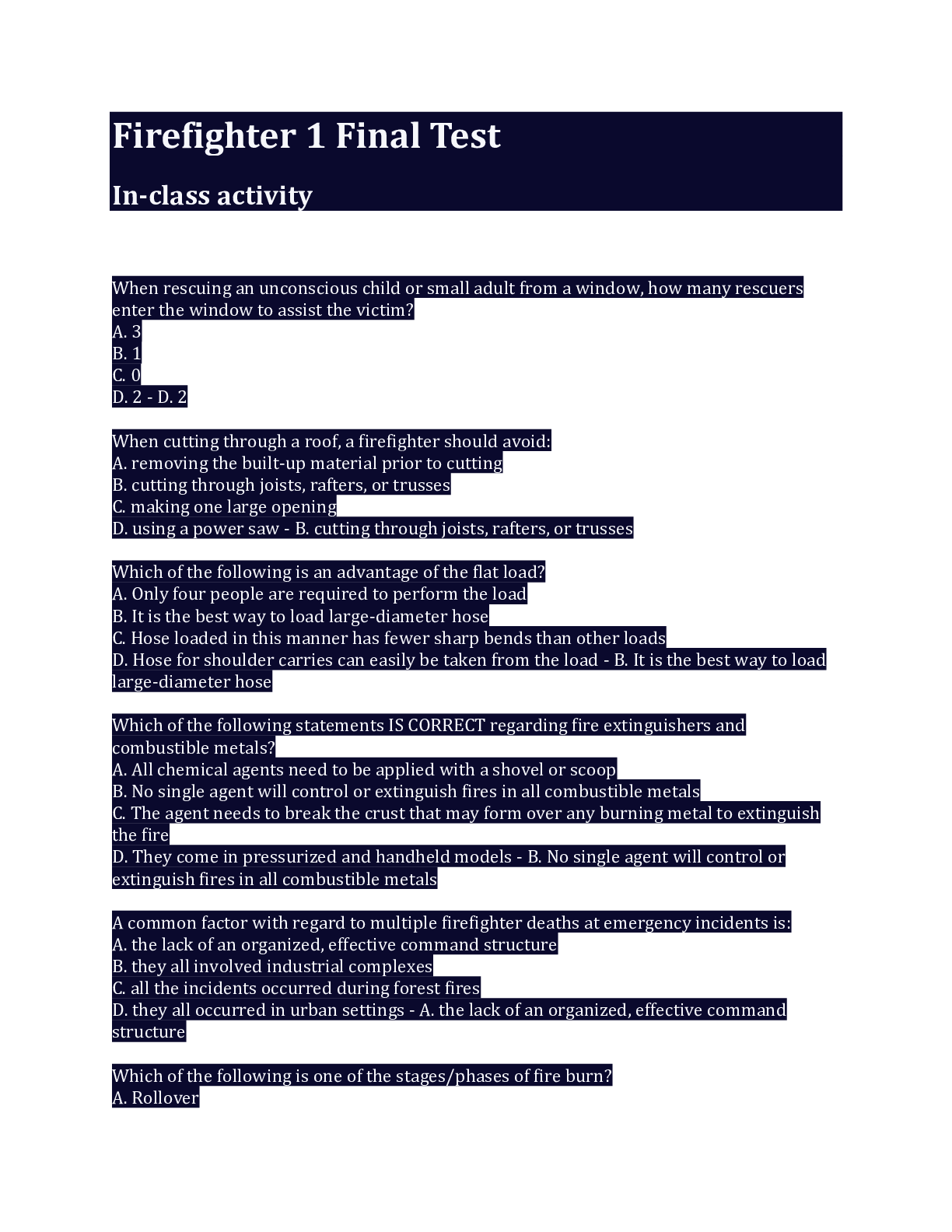Research Methods > EXAM > Summary International Business Research IBA – Questions & Answers 2023 (All)
Summary International Business Research IBA – Questions & Answers 2023
Document Content and Description Below
International Business - --consists of business transactions between parties from more than one country -can differ from domestic business for a number of reasons; some being boundaries, currencies, ... cultures, legal systems, availability of resources, skills & knowledge, etc -Globalization - --refers to the shift towards a more integrated and interdependent world economy -effects can be seen everywhere -Growing or expanding to exist throughout the entire world -Facets of Globalization - --Globalization of markets- no longer limited to selling products only in our domestic boundaries -Globalization of production- no longer limited to producing goods in our own country. -The economies of other countries affect international business -~Why study international business?~ - --provides knowledge and skills -helps make better career assessments -Compete successfully with peers and future competitors -stay abreast with latest business techniques and tools -obtain cultural literacy -Historical Perspective - --International business has been conducted ever since the first national borders were formed -IB have been a major force in shaping borders and changing world history -Pax Romana (27 BC-180AD) was an extended period of peace within the Roman Empire -Common coinage, roads, security, markets, standardized weights and measures -Two Recent eras of globalization - --First Period (1870-1914) -British Pound sterling -colonization -transportation and communication -Second Period (1990 onward) -US dollar -collapse of USSR (Berlin wall collapse so all countries allowed to trade openly) -opening up of china and other countries -technology and transportation -~Contemporary causes of globalization~ - --Strategic aka motivating factors (core competencies, resources, new markets, rivalry) -Facilitating Factors aka environmental causes (environmental, political, technology) -~Strategic Imperatives (motivating factors)~ - --Leveraging a firm's core competencies -acquiring resources at low cost -expanding into new markets -competing with industry rivals -~Facilitating factors (Environmental causes)~ - --Changes in the political Environment --Reduction of trade and investment barriers --the collapse of European communism --the idealogical and policy changes undertaken by china and india -Changes in the technological environment --Advances in transportation --Improvements in information processing --changes in communications technology -International Business Activities - --Exporting & importing (simplest form of IB and usually first form used as well) -International investments (FDI and FPI) -International Licensing (intellectual property) -International Franchising (franchisor and franchisee) -International management contract (management services) -~Exporting~ - --selling of products made in one's own country for use or resale in other countries -trade in goods: tangible products -trade in services: intangible products -~Importing~ - --buying of products made in other countries for use or resale in one's own country -Gross Domestic Product - --total monetary value of goods produced and services provided by a country in a year -USA prominent market -trade deficit -why convert to monetary value? comparisons between nations as well as comparisons within different time periods -monetary value must have specific time frame -GDP rankings as of 2014 in PPP terms (purchasing power parity) -( know USA figure and ranking of countries for testing) --China- 17.63 --European union-17.61 --USA-17.46 --India-7.27 --Japan -Exports of goods and services as a % of GDP (know all figures for testing) --Hongkong- 219.6 --Singapore- 187.6 --USA- 13.5 -International Investments - --Foreign Direct Investments (for purpose of active control) -Foreign Portfolio Investments (for purpose other than control) -FDI Stock vs. Flow - --Stock is the accumulation of investments where as flow is just in that time period -Stock of FDI abroad- Cumulative US dollar value of all investments in foreign countries, made directly by residents-primarily companies- of the home country. Excludes investments through purchase of shares -Stock of FDI at home- cumulative US dollar value of all investments in the home country, made directly by residents- primarily companies- of other countries. Excludes investments through purchase of shares. -Flow of FDI abroad- source is home and heading to other countries -Flow of FDI at home- source is other countries and heading to home country -Methods of FDI - --Greenfield strategy- build from scratch and build whole thing. Expensive and timely -Acquisition strategy/Brownfield strategy- acquire an already existing establishment -Joint venture- partnership with another entity -Largest MNC for 2015 - -Wal-mart (USA) [Show More]
Last updated: 2 years ago
Preview 1 out of 4 pages
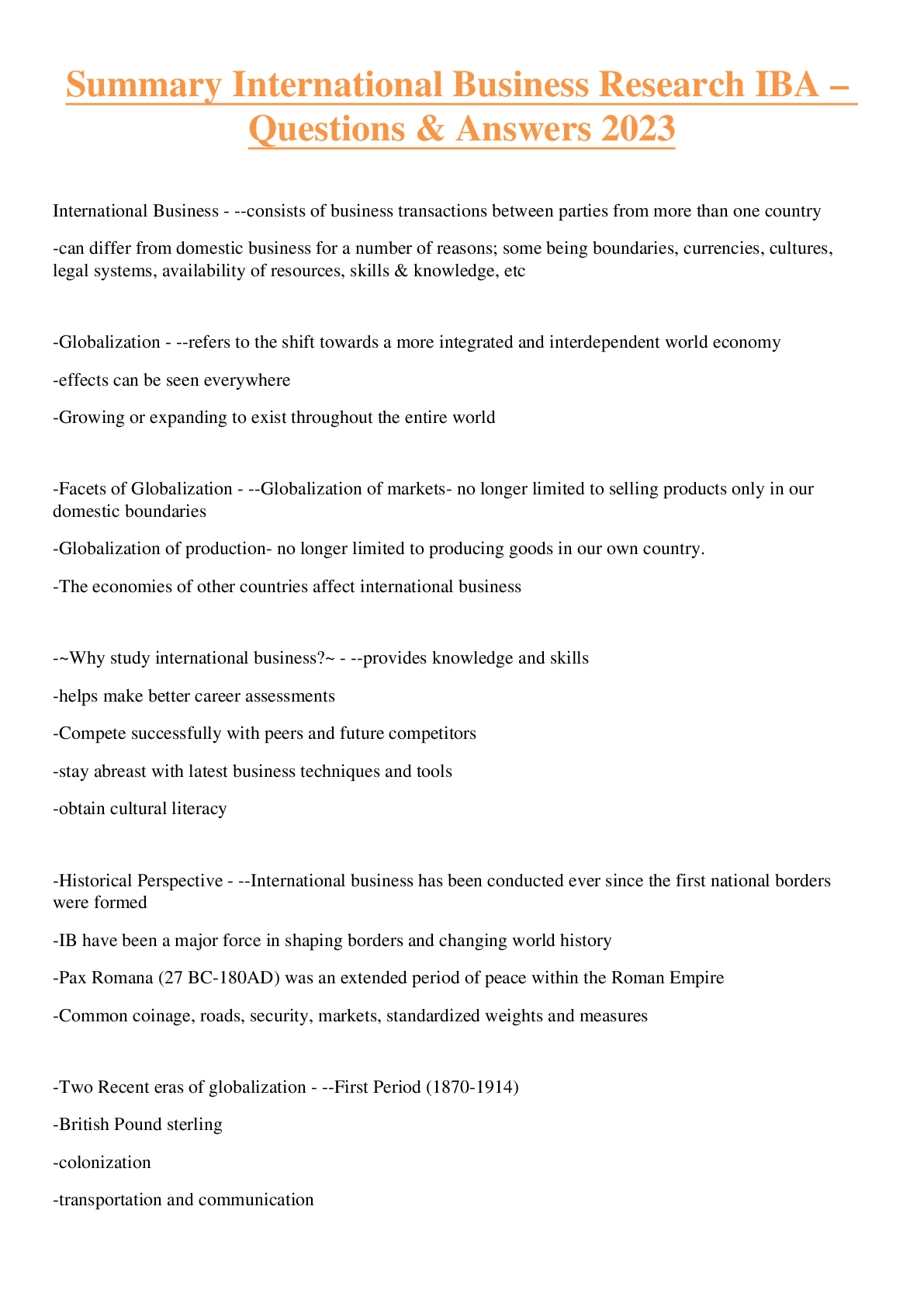
Buy this document to get the full access instantly
Instant Download Access after purchase
Buy NowInstant download
We Accept:

Reviews( 0 )
$7.00
Can't find what you want? Try our AI powered Search
Document information
Connected school, study & course
About the document
Uploaded On
Apr 06, 2023
Number of pages
4
Written in
Additional information
This document has been written for:
Uploaded
Apr 06, 2023
Downloads
0
Views
122

